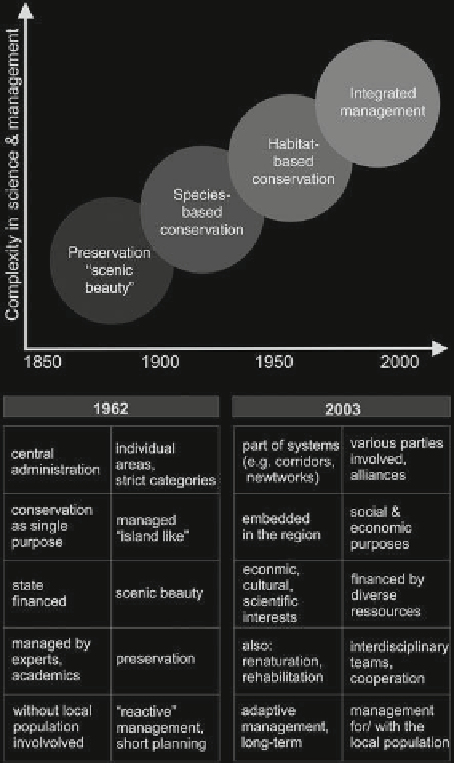Geoscience Reference
In-Depth Information
Fig. 20.1
Nature
conservation concepts and
their change over time
(adapted from: Brüggemann,
2004
; Job et al.,
2003
)
account that relate to recreation as a whole, be they social, ecological, economic
or management-related. The information gathered and analysed can be quantitative
data such as the number and spatial distribution of the visitors as well as qualita-
tive data like visitor characteristics and visitor behaviour. Visitor monitoring does
not mean data collection for its own sake. Its outlook, requirements and scope
are defined by clearly formulated objectives, concrete questions and the expecta-
tions of the management (Arnberger,
2007
; Muhar et al.,
2002
; Newsome et al.,
2004
). Today, numerous data collection methods are utilized for visitor monitoring
including methods of computer-based data-handling (storage, analysis, process-
ing, visualization, modelling and simulation, etc.). The need for continuously and
routinely available and accessible data demands the use of different computer
programmes (see, e.g. Arnberger,
2007
; Hellmuth,
2007
; Manning et al.,
2005
). But
how does the integration of visitor management and visitor monitoring as well as

Search WWH ::

Custom Search